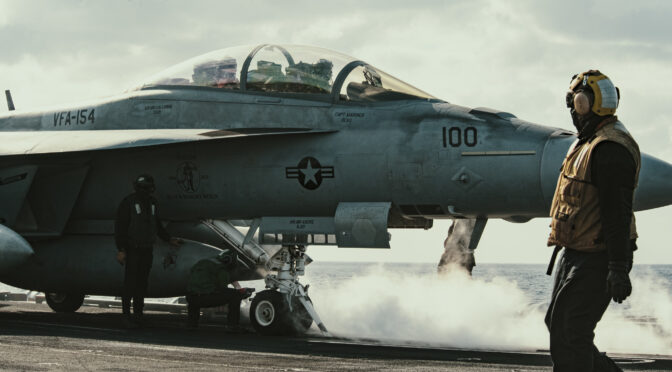Submissions Due: May 10, 2021
Week Dates: May 24-28, 2021
Article Length: 1000-3000 words
Submit to: Content@cimsec.org
By Dmitry Filipoff
In many respects, the U.S. military is torn between preparing for the future versus remaining vigilant in the present. Combatant command demand signals strip ready forces from the services, often leaving them with hardly enough time to reconstitute or exercise for force development (vice force employment). Despite major drawdowns from long-running wars in the Middle East the operations tempo of the services remains high, straining maintenance and personnel, and sending adverse ripple effects throughout organizations. Suffering through these pains has often been justified in the name of persistently engaging with the forward operating environment and being ready to “fight tonight.” Successive Defense Department leaders who serve at the highest levels in the chain of command, who play an important role in adjudicating global force allocation, have managed to do relatively little to change this fundamental calculus. A new strategic era of great power competition has just begun, and the U.S. military services are already paying a hefty price for adhering to a logic designed for yesterday’s threat environment.
In a recent op-ed entitled “Redefine Readiness or Lose,” Chief of Staff of the Air Force General Charles Q. Brown and Commandant of the Marine Corps General David H. Berger warned against this fundamental calculus and described how it is endangering the ability of the services to effectively prepare for great power competition.
They decried orienting readiness toward the “fight tonight” paradigm, which they described as a “handcuff” and “myopic” with “harsh tradeoffs.” This paradigm strongly reinforces incentives to continue fielding legacy platforms and optimizing them for immediate use, instead of the deeper and more evolutionary modernization that can provide a meaningful edge in great power competition. They argue that freeing the services of the “tyranny” of the “fight tonight” perspective will also allow for greater flexibility in developing new strategies. In the eyes of Generals Brown and Berger, “Over past decades, readiness has become synonymous with ‘availability,’” and that they believe “our understanding of both operational and structural readiness ought to place far more weight on factors related to service modernization.” At the core of the problem is how the definition of true readiness has become muddled and distorted.
CIMSEC invites contributors to join the debate on redefining readiness. Important questions include: Ready for what? Ready for when? And what needs to be ready? Does great power competition require a redefinition of readiness? How could the relationship between force development, force generation, and force employment be recalibrated to emphasize specific readiness priorities? What are the risks inherent to such tradeoffs? Does overturning the “fight tonight” model require a major strategic reappraisal?
Contributors can answer these questions and more as the debate on redefining readiness continues. Send all submissions to Content@cimsec.org.
Dmitry Filipoff is CIMSEC’s Director of Online Content. Contact him at Content@cimsec.org.
Featured Image: PACIFIC OCEAN (Feb. 19, 2021) Sailors perform preflight checks on an F/A-18F Super Hornet, assigned to the “Black Knights” of Strike Fighter Squadron (VFA) 154, on the flight deck of the aircraft carrier USS Theodore Roosevelt (CVN 71) Feb. 19, 2021. (U.S. Navy photo by Mass Communication Specialist Seaman Alexander B. Williams)

